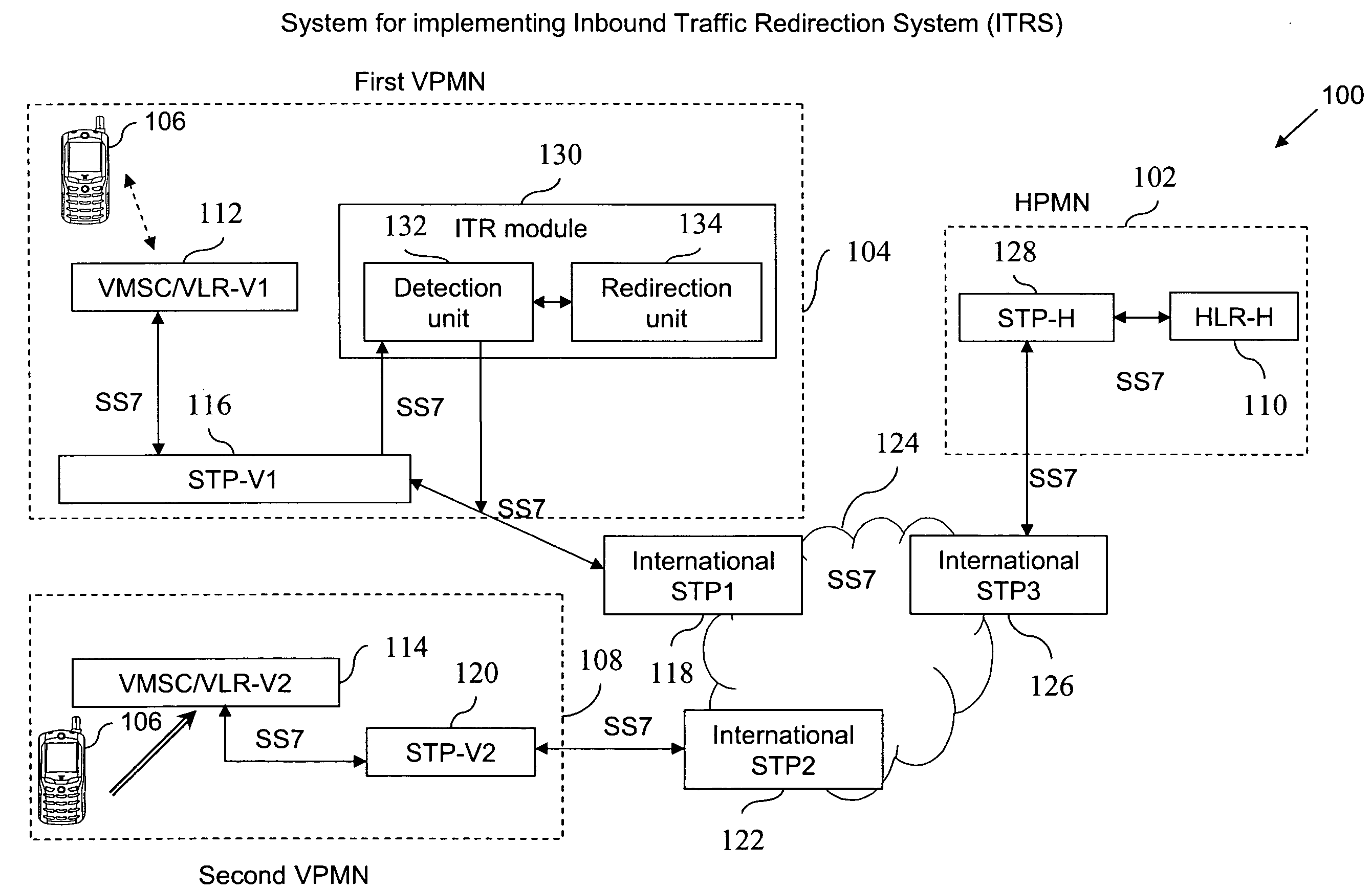Method and system for providing inbound traffic redirection solution
a technology of inbound traffic and redirection, applied in the field of roamers, can solve the problems of unnecessarily overloading the network interface between the hpmn and the vpmn, network errors on the subscriber's mobile handset's radio interface, and depriving non-preferred vpmn operators of inbound roaming revenues, etc., to facilitate the roamer's mobile communication
- Summary
- Abstract
- Description
- Claims
- Application Information
AI Technical Summary
Benefits of technology
Problems solved by technology
Method used
Image
Examples
first embodiment
[0074]FIGS. 7A, 7B, and 7C represent a flow diagram for handling a stuck handset case, when the roamer's handset is stuck during its registration attempt at the competitor network, in accordance with the present invention. Roamer 106 attempts to (or is forced to attempt to) register with second VPMN 108 due to one or more reasons as described above. At step 702, VLR-V2114 sends an LUP message to HLR-H 110. At step 704, HLR-H 110 sends the one or more registration cancellation messages, such as CancelLocation message to VLR-V1112, to abort roamer 106's registration with first VPMN 104. Detection unit 132 detects the receipt of the CancelLocation message at first VPMN 104. At step 706, HLR-H 110 sends another CancelLocation message. However, this time ITR module 130 taps the CancelLocation message.
[0075] Thereafter, at step 708, ITR module 130 sends an SRI-SM message to HLR-H 110, to retrieve a VMSC / VLR address of roamer 106. At step 710, ITR module 130 attempts to redirect the traffi...
second embodiment
[0083]FIGS. 8A, 8B, and 8C represent a flow diagram for handling a stuck handset case, when the roamer's handset is stuck after it successfully registers with the competitor VPMN network, in accordance with the present invention. In this embodiment the roamer's handset is unaware of the CancelLocation message received at second VPMN 108 from HPMN 102, as roamer has successfully completed its registration process with second VPMN 108, prior to receiving this CancelLocation message. At step 802, second VPMN 108 successfully completes the registration process with HPMN 102. Steps 804 to 816 are similar to steps 704 to 716, in which first VPMN 104 receives a CancelLocation message to abort the roamer 106's registration with first VPMN 104. However, in this embodiment, ITR module 130 is not aware that roamer 106 is already registered with second VPMN 108. Upon receiving a CancelLocation message from HPMN 102, ITR module 130 sends an SRI to retrieve a VMSC / VLR address in second VPMN 108, ...
PUM
 Login to View More
Login to View More Abstract
Description
Claims
Application Information
 Login to View More
Login to View More - R&D
- Intellectual Property
- Life Sciences
- Materials
- Tech Scout
- Unparalleled Data Quality
- Higher Quality Content
- 60% Fewer Hallucinations
Browse by: Latest US Patents, China's latest patents, Technical Efficacy Thesaurus, Application Domain, Technology Topic, Popular Technical Reports.
© 2025 PatSnap. All rights reserved.Legal|Privacy policy|Modern Slavery Act Transparency Statement|Sitemap|About US| Contact US: help@patsnap.com



